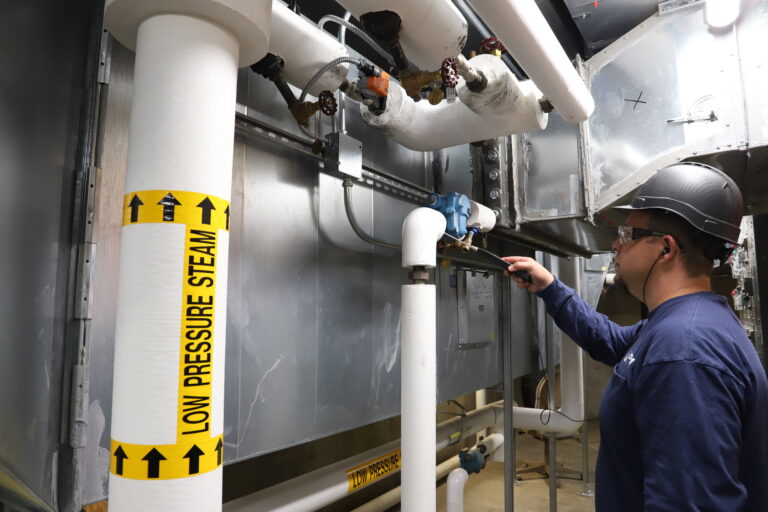January 26, 2022 — Room-occupancy sensors. More coworking space. Smaller private offices — or none at all — and more collaborative space. These are among the many new occupancy management issues on the minds of corporate executives and facilities managers as they grapple with bringing employees back to the office in a manner that allows them to make the most efficient use of their office space while accommodating hybrid work.

There is no defined, one-size-fits-all playbook for how companies can accommodate changes in employees’ time in the office and support the type of work they will do when there. To that end, a new study from global commercial real estate services and investment firm CBRE examined 42 companies occupying a cumulative 350 million sq. ft. of office space across the globe to better understand the complex occupancy dynamics behind the trend toward widespread hybrid work.
Their challenge is to accommodate an often uneven flow of employees into and out of the office on a given day, detect patterns around which to shape their office design and amenities, and recalibrate the size of their office portfolio accordingly.
Susan Wasmund, CBRE’s Global Occupancy Management lead, pointed out:
Many companies understand that they need to create an engaging, productive and efficient workplace to help bring employees back to their offices. Many returning employees will find that their workplaces have evolved beyond those they left last year. Over the next few months, many of us will get accustomed to changes such as using an app to book workspace and meeting space for the day or using the app to find out who is going into the office so that you can meet up.
Among the findings of CBRE’s analysis, which spanned January through August of 2021:
- As of August, 60% of companies were revisiting the design of their workplaces to accommodate changes in work practices due to the pandemic, 29% planned no changes and 12% hadn’t decided yet. Part of those efforts involved reducing their number of private offices and making them smaller in size. A quarter of companies now don’t include private offices in their standard workplace designs. Most companies (56%) now use standard office sizes of 100 to 149 sq. ft., a slight decrease from past years.
- Companies now are paying more attention to their office-utilization rates — the count of people physically occupying a space — than to traditional metrics, such as their number of unassigned desks and ratio of seats per square foot, in determining their space needs and ideal office design. To do this, 79% of companies track employee-badge swipes at entry points to gauge the daily occupancy of their offices, 56% use visual observation, 46% monitor office WiFi log-ons, and 26% use sensors that monitor rooms and desks.
- Most companies (56%) are using flex-office space — which is leased on a short-term basis — to supplement their office portfolios. Of the respondents, 43% say they plan to increase their use of flex space going forward, while 36% haven’t decided on any change yet.
Lenny Beaudoin, CBRE’s executive managing director of Workplace, Design and Occupancy, stated:
There is no one-size-fits-all solution as companies adapt their workplace in response to the pandemic, but most companies will make changes, large and small, to accommodate hybrid work schedules and optimize their office portfolios. Real-time occupancy analytics like those contained in this report will be essential as employers recalibrate their workplace strategy for the future.
To review the full Global Occupancy Insights 2021 report, visit the CBRE Group website. The Dallas-based Fortune 500 and S&P 500 company offers a broad range of integrated services including facilities, transaction and project management; property management; investment management; appraisal and valuation; property leasing; strategic consulting; property sales; mortgage services and development services through more than 100,000 employees in over 100 countries.




